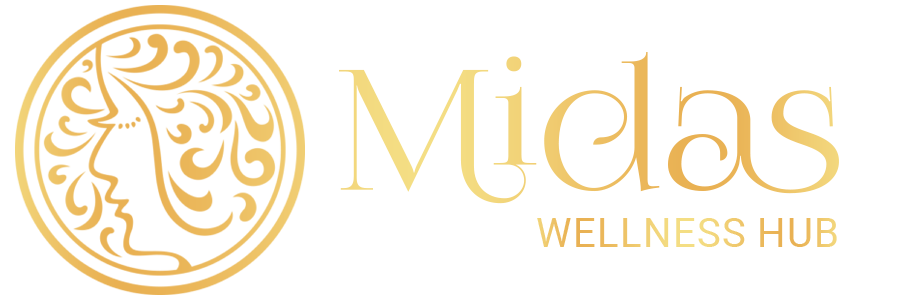
Fungal Acne: Why Your Breakouts Aren’t Going Away with Normal Acne Treatments

Fungal Acne: Why Your Breakouts Aren’t Going Away with Normal Acne Treatments
You’ve tried everything.
Face washes, salicylic acid, benzoyl peroxide, oil-free moisturizers, clay masks. You’ve followed the advice of influencers, scoured Reddit threads, and maybe even cut out dairy (RIP cheese). But those tiny, itchy, stubborn breakouts just won’t budge.
What if… it’s not acne at all?
Let’s talk about the silent imposter: fungal acne!
What is fungal acne, really?
Despite its name, fungal acne isn’t acne in the traditional sense. It’s actually caused by an overgrowth of yeast—Malassezia—that naturally lives on our skin. Under certain conditions, this yeast overgrows and triggers an inflammatory reaction in the hair follicles. The clinical term is Malassezia folliculitis or Pityrosporum folliculitis.
Unlike bacterial acne, which involves clogged pores, oil, and Propionibacterium acnes, fungal acne is more of a yeast party gone wild.
How do you know it’s fungal acne and not regular acne?
Here’s the tricky part: fungal acne can look almost identical to regular acne. But there are some telltale signs that set it apart:
✅ Uniform appearance: Fungal acne usually shows up as small, similar-sized red or skin-colored bumps. They’re often itchy and clustered together.
✅ Location matters: It commonly appears on the forehead, chest, back, and shoulders—not as much on the jawline or cheeks.
✅ Itchiness: Fungal acne tends to be way itchier than regular acne.
✅ No response to traditional acne treatments: If your breakouts seem immune to every product in the acne aisle, this could be why.
✅ Flares up with humidity and sweat: Warm, moist environments feed the yeast. If your breakouts get worse after workouts, heat, or sweating, this is a red flag.
Why is it happening?
There are a few common triggers that tip the balance and allow yeast to take over:
Excessive sweating – Ideal conditions for yeast growth.
Occlusive skincare or heavy products – They trap moisture and heat on your skin.
Antibiotic use – Kills off the bacteria that normally keep yeast in check.
Weakened immunity or stress – Can make the skin barrier more vulnerable.
Tight clothing or non-breathable fabrics – Traps sweat and heat.
High humidity (hello, Mumbai summers) – Yeast thrives in hot, moist environments.
Even seemingly healthy habits like working out regularly or wearing SPF can contribute, especially if products aren’t cleaned off well or if sweat sits on the skin too long.
Why regular acne treatments won’t work (and can make it worse)
This is one of the most frustrating parts. Many standard acne treatments are antibacterial—not antifungal. They may suppress inflammation temporarily, but they don’t kill the yeast. Even worse, long-term use of antibiotics can destroy your skin’s natural bacteria and give yeast the perfect opportunity to take over.
Moisturizers and occlusive serums, even non-comedogenic ones, can also worsen fungal acne if they contain ingredients that feed yeast (like esters, polysorbates, or fermented extracts).
So, you could be diligently applying your routine and unknowingly making the problem worse. And that’s why fungal acne is so stubborn.
What actually helps fungal acne?
If you suspect your breakouts are fungal, the solution is to treat the yeast—not the acne. Here’s what can help:
🧼 Use antifungal agents
Ketoconazole 2% shampoo (like Nizoral) as a face and body wash 2–3 times a week can significantly reduce fungal load.
Selenium sulfide shampoos or zinc pyrithione soaps are also great options.
❌ Simplify your skincare
Avoid heavy creams and oils that trap moisture.
Look for lightweight, non-occlusive products.
Stay away from ingredients that feed yeast (like esters, polysorbates, or coconut oil).
💊 Consider oral antifungals
In stubborn or widespread cases, dermatologists may prescribe oral antifungals like fluconazole or itraconazole for short periods.
🧺 Change your laundry and gym habits
Shower immediately after sweating.
Wash gym clothes and pillowcases frequently.
Avoid tight, non-breathable clothing.
🌿 Probiotic-rich diet & gut health
While more research is needed, some people find that balancing gut flora (with probiotics or fermented foods) helps reduce yeast overgrowth.
Common mistakes people make
Misdiagnosing it as acne and continuing to use harsh exfoliants or antibiotics.
Overloading on products, thinking more is better (with fungal acne, less is more).
Not treating the scalp, where Malassezia often begins.
Ignoring lifestyle factors like heat, fabric choices, and post-workout hygiene.
When should you seek professional help?

If your breakouts have persisted for months despite multiple treatments, it’s time to consult a professional. A trained skin expert can differentiate between bacterial acne, fungal acne, and other lookalikes like rosacea or folliculitis. They may also suggest lab tests or a skin scraping to confirm the diagnosis.
The bottom line
Fungal acne is sneaky, persistent, and incredibly common—but rarely talked about. If you’re stuck in a cycle of skincare that just isn’t working, it’s worth considering that yeast—not oil or bacteria—could be behind your breakouts.
The good news? Once you identify it correctly, treatment is straightforward—and relief can be fast.
At Midas Wellness Hub, we see you.
Our skin experts routinely treat resistant breakouts that turn out to be fungal in nature. We offer personalized assessments, lab-supported diagnosis (if needed), and tailor-made antifungal treatment plans—so you can finally get to the root cause and stop the breakout cycle.
With clinics in Borivali and now expanding to new locations, we’re committed to helping you love the skin you’re in—with honesty, science, and care.
Book a skin consultation today at Midas Wellness Hub. Let’s clear up the confusion—and your skin.
